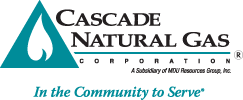| Health Education | 3 | Injury Prevention | H1.Sa1.3a | -- | Identify ways to prevent injuries at home, at school, and in the community. |
| Health Education | 3 | Injury Prevention | H1.Sa1.3b | -- | Create emergency, fire, and safety plans for home. |
| Health Education | 4 | Injury Prevention | H7.Sa1.4 | -- | Describe practices and behaviors that promote safety and reduce or prevent injuries. |
| NGSS Physical Sciences | 4 | Energy | 4-ESS3-1 | -- | Obtain and combine information to describe that energy and fuels are derived from natural resources and their uses affect the environment. |
| NGSS Physical Sciences | 4 | Energy | 4-PS3-4 | Energy in Chemical Processes and Everyday Life | The expression "produce energy" typically refers to the conversion of stored energy into a desired form for practical use. |
| NGSS Physical Sciences | 4 | Energy | ESS3.A | Natural Resources | Energy and fuels that humans use are derived from natural sources, and their use affects the environment in multiple ways. Some resources are renewable over time, and others are not. |
| Health Education | 5 | Injury Prevention | H1.Sa1.5a | -- | Identify dangerous or risky behaviors that might lead to injuries. |
| NGSS Physical Sciences | 5 | Structure and Properties of Matter | 5-PS1-1 | -- | Develop a model to describe that matter is made of particles too small to be seen. |
| NGSS Physical Sciences | 5 | Structure and Properties of Matter | 5-PS1-4 | -- | Conduct an investigation collaboratively to produce data to serve as the basis for evidence, using fair tests in which variables are controlled and the number of trials considered. |
| NGSS Physical Sciences | 5 | Structure and Properties of Matter | 5-PS1-A | -- | Matter of any type can be subdivided into particles that are too small to see, but even then the matter still exists and can be detected by other means. A model showing that gases are made from matter particles that are too small to see and are moving freely around in space can explain many observations, including the inflation and shape of a balloon; the effects of air on larger particles or objects. |
| NGSS Physical Sciences | 6 | Structure and Properties of Matter | 06-PS1-4 | -- | In a liquid, the molecules are constantly in contact with others; in a gas, they are widely spaced except when they happen to collide. In a solid, atoms are closely spaced and may vibrate in position but do not change relative locations. |
| NGSS Physical Sciences | 6 | Structure and Properties of Matter | 06-PS1-4 | -- | Gases and liquids are made of molecules or inert atoms that are moving about relative to each other. |

